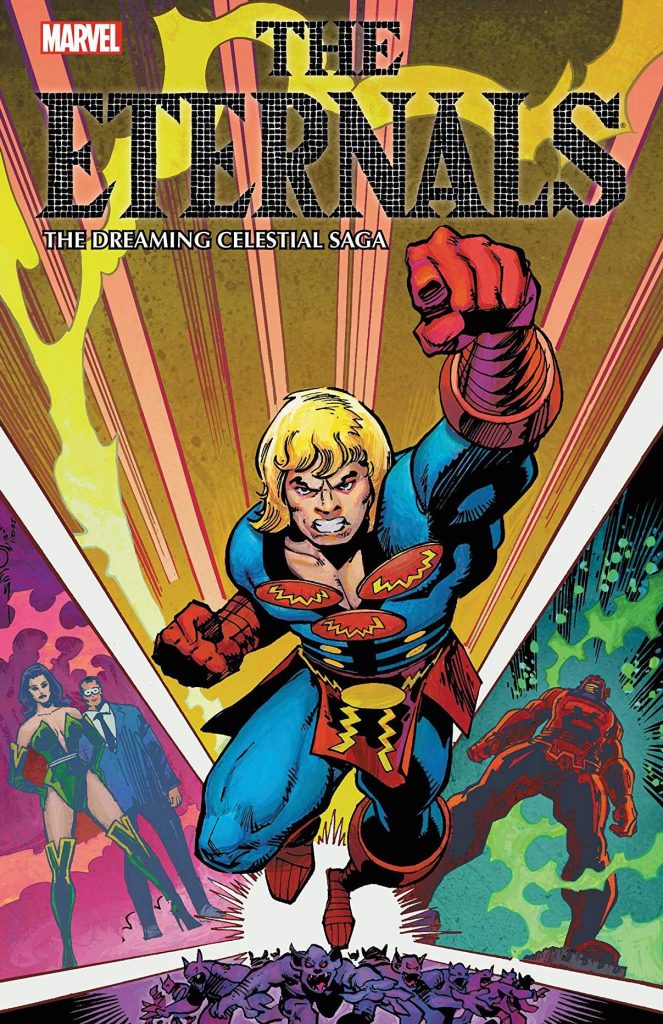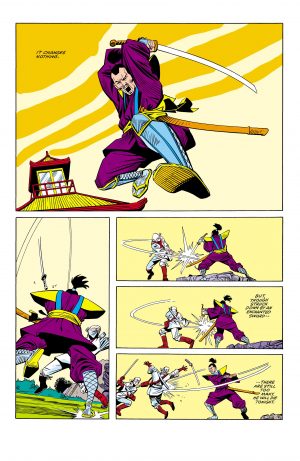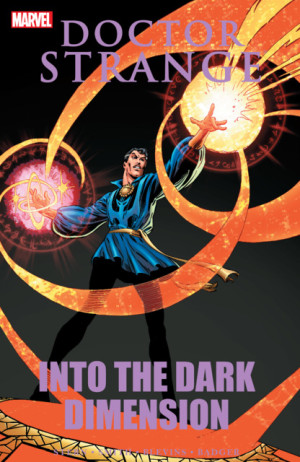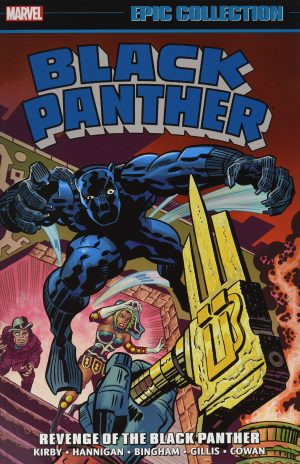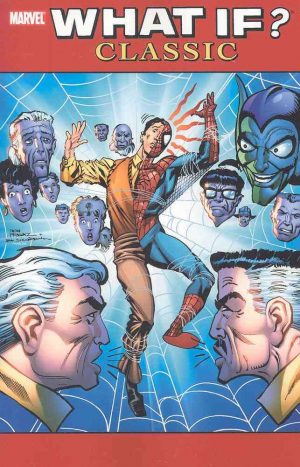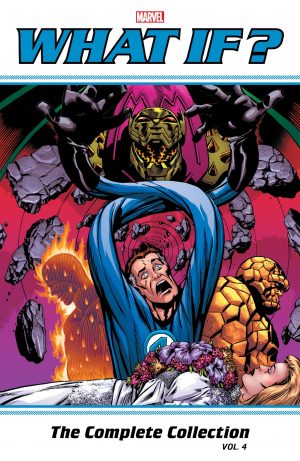Review by Frank Plowright
In 1985 reviving the Eternals was possibly a strange idea. It had seemed from the letters pages of Jack Kirby’s original series that fans could only see the poorer aspects of what was admittedly a flawed series, without being able to appreciate the scale, the ambition and the conceptual wonder of the parts that worked. The characters were next incorporated into Thor stories where they overstayed their welcome (see Thor and the Eternals: The Celestials Saga).
The bulk of this collection is a twelve chapter story begun by Peter B. Gillis, but it takes a while to reach it, although Gillis supplies an enlightening introduction concerning the nuts and bolts before the comics. These start with Mark Gruenwald, Ralph Macchio and Gillis establishing the presence of the Celestials on Earth jump-starting humanity, creating the Eternals and the Deviants and tying them in with the Inhumans. It’s background, with Ron Wilson in places supplying a nice Kirby imitation, but never compelling, which is also the case for Gillis and Luke McDonnell’s outing in which Iron Man rescues the Eternals.
Roger Stern and Al Milgrom introduce Sersi to the Avengers in a story designed to connect Thanos and his kin to the Eternals. The Eternals sections might have read better excerpted from the assorted activities of the Avengers, and the art’s basic, but the method of ridding Earth of hundreds of unwanted Eternals is neat.
Reaching the main event, Gillis wisely elects not to attempt greater integration with the mainstream Marvel universe, nor to deliver a pale imitation of Kirby’s ideas, but uses the Eternals to tell a story of political intrigue, and gives equal prominence to the Deviants. He starts with the clever conceit of no-one remembering the Celestials ever appeared on Earth, nor the existence of two humanoid species different and distinct, and returns the humans who have had contact with Eternals and Deviants, both of which have new leaders. Harsh and unforgiving societies are given a grandeur by Sal Buscema, again drawing on Kirby without slavishly imitating, and as seen by his sample art, there’s an investigation of other cultures where the Eternals have played a part.
Gillis is ahead of his time in laying out differences of opinion and ramifications of political process, but can focus on this too greatly while sacrificing forward motion, and at times the cast, Thena especially, are too melodramatic. Balanced against that is a wide range and a talent for developing interesting relationships and imposing personalities. Gillis doesn’t complete his story, which is bequeathed to Walter Simonson, a more plot-oriented writer who’s better at dropping surprises. However in doing so, he trivialises Ghaur, Gillis’ best creation who becomes too much the overbearing villain rather than a schemer, and what’s intended as a desperate final chapter is just another Avengers story. Buscema is also gone, replaced by lesser talents leaving an ambitious, although often too wordy story with moments of inspiration, but which ultimately falls short.
Almost five hundred pages concludes with the Marvel Age promo article introducing the 1985 story, and a few pages reproducing the original art for covers and interiors. Anyone who really wants this material in an oversized format can find it combined with all Kirby’s Eternals material in The Eternals: The Complete Saga.
